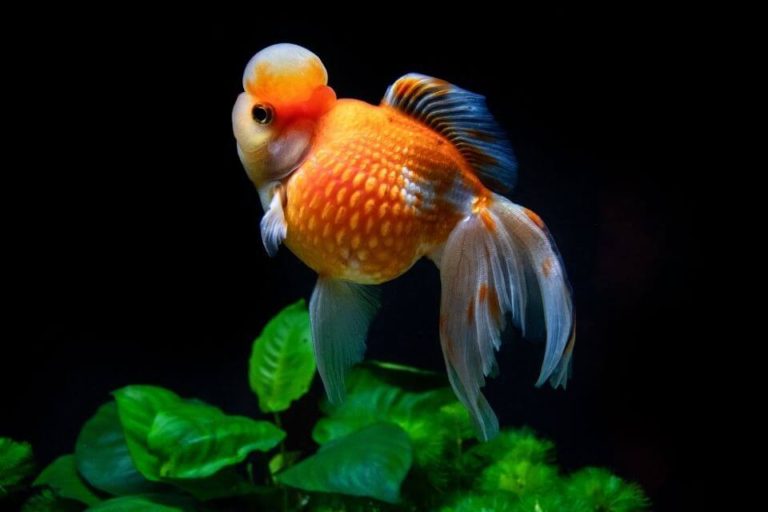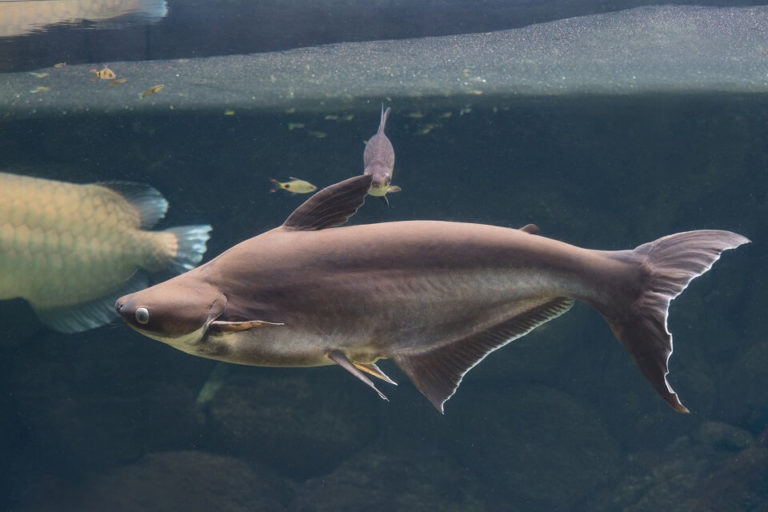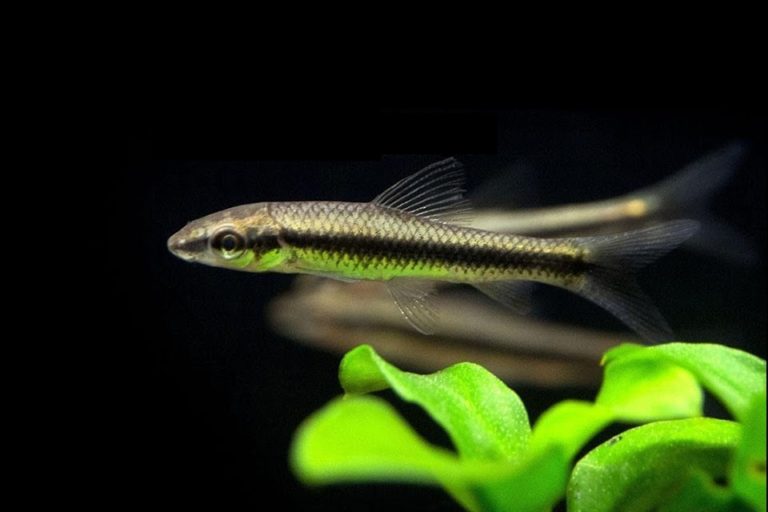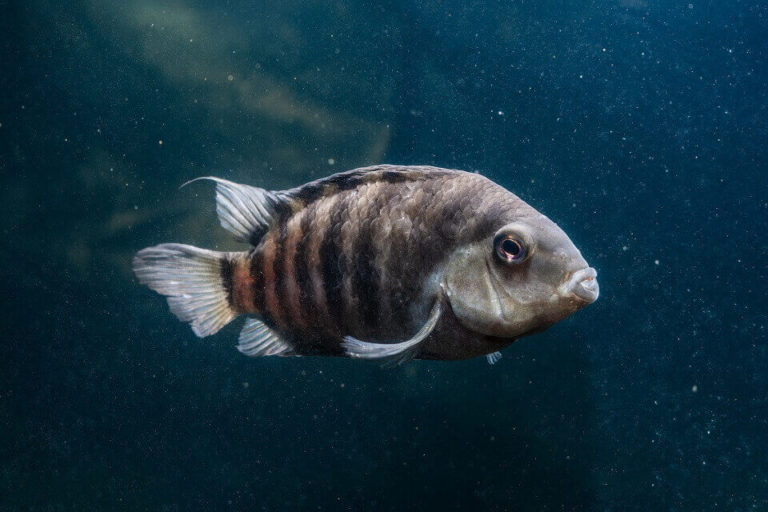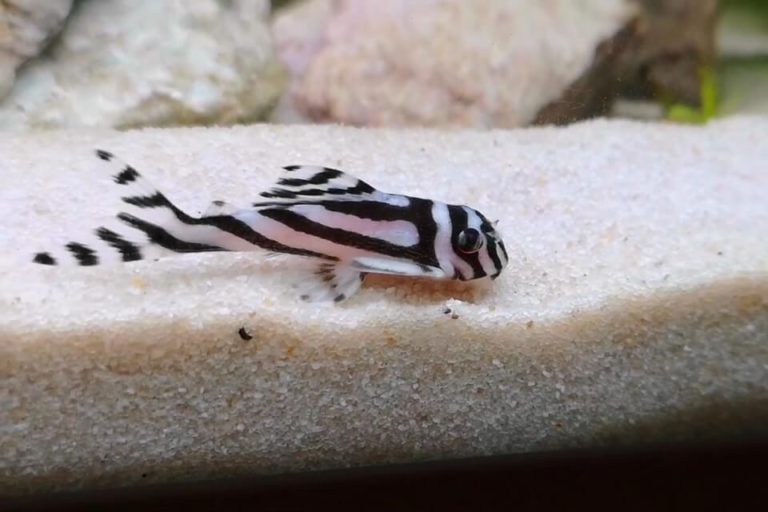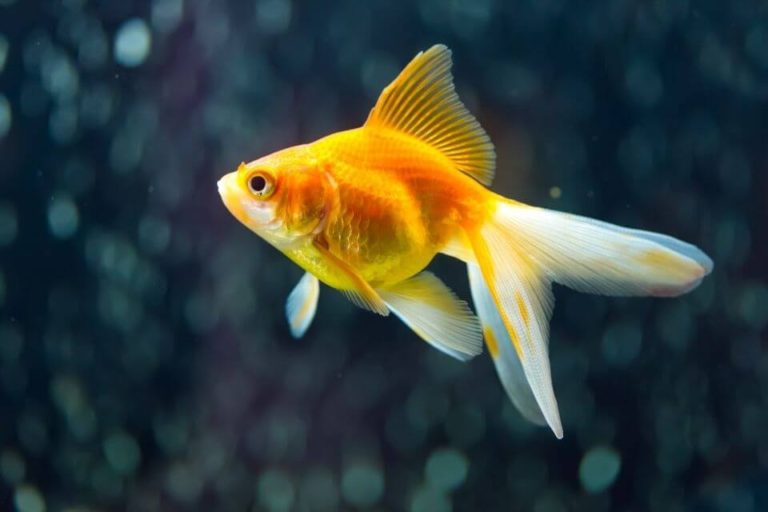Blue Velvet Shrimp Care: Tank Mates, Tank Size, Food, and More
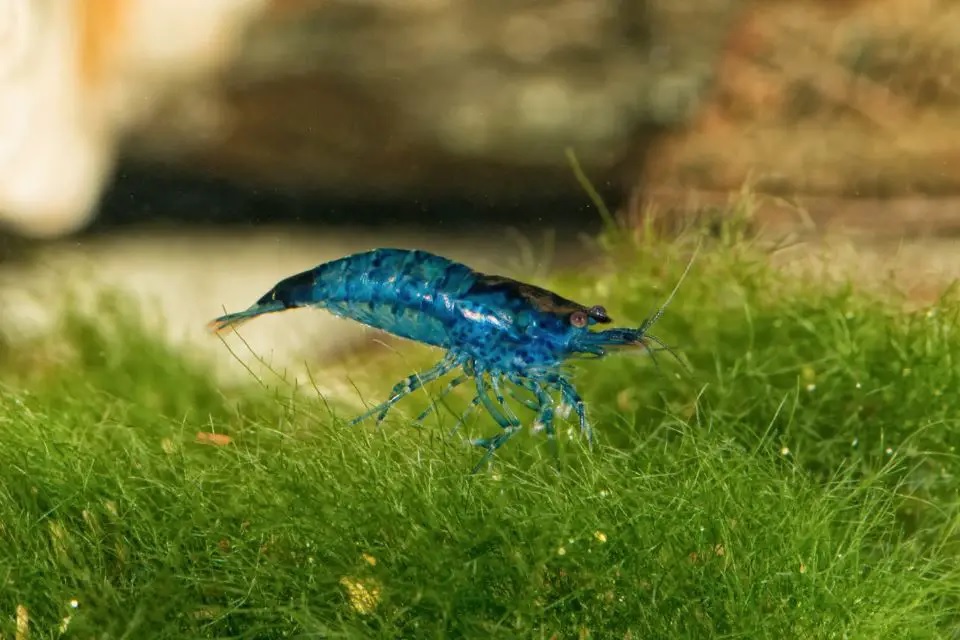
Blue Velvet Shrimp is a type of freshwater shrimp that are popular in the aquarium hobby. They are known for their striking blue coloration and interesting behavior. These shrimp species require a specific set of care requirements to thrive in the home aquarium.
Also, these freshwater shrimp are peaceful species that do well in a community aquarium. They should be kept with other peaceful fish that will not harass or eat them. Blue Velvet shrimp are also known to be good algae eaters and can help keep your aquarium clean.
In this Blue Velvet shrimp care article, we will discuss the care requirements and provide some tips on how to keep them healthy and happy.
Blue Velvet Shrimp Overview
They are a beautiful and popular variety of freshwater aquarium shrimp. As their name suggests, they have a soft, velvety blue carapace. They are native to freshwater bodies in Southeast Asia, and they typically live for 1 to 2 years.
These shrimp species are peaceful and generally non-aggressive, making them a good choice for community tanks. They are also proficient at cleaning algae and detritus from tank walls and plants.
Blue Velvet Shrimp are omnivorous, and they will generally accept most types of aquarium foods.
However, they require large amounts of iodine in their diet, so it is important to use a shrimp-safe aquarium salt when setting up their tank. With proper care, it can make a beautiful and intriguing addition to any freshwater aquarium.
Blue Velvet Shrimp Size
One of the most striking features is its size. Blue Velvet shrimp size can reach up to 2 inches in length. In addition to their size, Blue Velvet Shrimp are also noted for their bright blue coloration.
Blue Velvet Shrimp Lifespan
It has a lifespan of 1 to 2 years. They require a variety of foods, including algae, detritus, and small pellets for a healthy lifespan. Also, the lifespan will depend on the care you have given to them.
Appearance And Color
The appearance can vary depending on their diet and water conditions. In general, they are small shrimp with bright blue bodies and translucent legs. Their undersides are often a slightly lighter color, and they may have white spots or stripes on their shell.
Blue velvet shrimp are very active and make interesting pets. They are also known to be relatively long-lived for shrimp, with some living for several years. Because of their striking appearance, blue velvet shrimp are popular in the aquarium trade.
However, they are not always easy to care for and require special attention to their diet and water quality.

Behavior & Temperament
Blue velvet shrimps are one of the most popular freshwater aquarium shrimp. They are easy to care for and make a great addition to any community tank. Blue velvet shrimp are peaceful and non-aggressive, making them a good choice for beginners.
They are also very active and love to scavenge for food. They are omnivorous and will eat just about anything. In the wild, their diet consists of algae, plants, and small insects.
In the aquarium, they will happily eat leftover fish food, algae wafers, and spirulina flakes. Blue velvet shrimp are relatively easy to breed in captivity. females will carry their eggs for about two weeks before releasing them into the water column.
The fries are very delicate and need to be fed small live foods such as baby brine shrimp or micro worms. With proper care, it will thrive well in most freshwater aquariums.
Blue Velvet Shrimp Care
They are relatively easy to care for, but there are a few things to keep in mind to keep them healthy and happy. First, they prefer a tank with plenty of hiding places and live plants.
They are also quite sensitive to water quality, so regular water changes are a must. Blue Velvet Shrimp are omnivorous, so a varied diet is important. In addition to standard shrimp pellets, they will also consume algae, small insects, and even fish food.
Lastly, these shrimp species are social creatures and do best in groups of 6 or more. When kept in proper conditions, Blue Velvet Shrimp make beautiful and interesting additions to any freshwater aquarium.
Blue Velvet Shrimp Tank Size
Blue Velvet Shrimp are a peaceful and social species of shrimp that do best in groups. For this reason, they should be kept in a tank of at least 10 gallons. However, a larger tank is always better to provide plenty of space for them to swim and hide.
Blue Velvet Shrimp Tank Setup
These fish species are a beautiful and popular addition to many aquariums. They are relatively easy to care for, and their striking blue coloration adds a touch of elegance to any tank.
When setting up a blue velvet shrimp tank, there are a few things to keep in mind. Blue velvet shrimp prefer a soft, sandy substrate. This can be achieved by using quality aquarium sand or by adding live plants to the tank.
In terms of lighting, they do best in aquariums that receive moderate to low light. A simple LED aquarium light will suffice. As for filtration, they are not particularly sensitive to water quality.
A basic aquarium filter will provide them with the clean water they need to thrive. Finally, when it comes to decorations, blue velvet shrimp are not overly fussy.
They will appreciate some hiding places, such as caves or driftwood, but otherwise, any rocks or plants will do. With a little bit of planning, setting up a blue velvet shrimp tank is a relatively simple process.
Water Parameters And Testing
Maintaining the proper water parameters is critical to the health of your Blue Velvet Shrimp. Ammonia and nitrites should be at 0 ppm, while nitrates should be below 20 ppm.
Water acidity levels should be between 6.0 and 8.0 pH, and the water should be soft to medium hard. You can test your water using a simple test kit from your local pet store.
To keep your shrimp healthy, it is also important to perform regular water changes. A good rule of thumb is to change 10-20% of the tank water every week. This will help to remove any build-up of toxins and ammonia, and will also replenish any lost minerals.
Be sure to use a high-quality dechlorinator when adding new water to your tank, as chlorine can be harmful to shrimp. If you maintain the proper water parameters and perform regular water changes, your Blue Velvet Shrimp will thrive in their new home.
- Water Temperature Range: 72° to 82° F (22 to 28°C)
- Hardness: 4 to 14 dGH
- Water Acidity Levels: 6.0 to 8.0 pH
Suitable Aquarium Plants
While they are not overly demanding in terms of water quality, they do need some specific plants to thrive. Ideal plants are Java Moss, Anubias, and Hornwort.
These plants provide shelter and refuge for the shrimp, as well as oxygenate the water. In addition, they help to keep the water clean and free of harmful algae.
Blue velvet shrimp are also known to nibble on plant leaves, so it is important to choose plants that are not too delicate. By providing the right plants, you can create a thriving environment for your Shrimp.
Common Diseases And Prevention
Blue Velvet Shrimps are a beautiful and popular addition to many aquariums. However, like all shrimp, they are susceptible to several diseases.
The most common include White Spot Disease, Vorticella Disease, and Gill Flukes. White Spot Disease is caused by a parasite that burrows into the shrimp’s shell, causing white spots to appear.
Vorticella Disease is caused by a faulty diet and results in the shrimp’s tail becoming frayed and disintegrating. Gill Flukes are parasites that attach themselves to the gills and cause difficulty breathing.
While these diseases can be fatal, there are several steps that can be taken to prevent them. First, it is important to quarantine new shrimp before introducing them to your aquarium. This will help to ensure that any diseased shrimp are not introduced to your existing population.
Second, maintain clean water conditions by performing regular water changes and using a good filtration system. Finally, feed your shrimp a high-quality diet that includes plenty of vegetables.
By taking these precautions, you can help to keep your Blue Velvet Shrimp healthy and free from disease.
Blue Velvet Shrimp Food And Feeding
One of the most important things to consider when keeping Blue Velvet Shrimp is their diet. These shrimp are omnivores, so they will need a variety of both plant and animal foods.
A good quality shrimp food should be the base of their diet, but you can also supplement with items like blanched vegetables, frozen foods, and live food. As for feeding frequency, a general rule of thumb is to feed them as much as they can eat in 2-3 minutes 2-3 times per week.
However, it’s always best to observe your shrimp and feed them accordingly. Overfeeding can lead to water quality issues, so it’s important not to overdo it. With a little care and attention, you can keep your Blue Velvet Shrimp healthy and happy for many years to come.
Difference Between Male and Female Blue Velvet Shrimp
Male Blue Velvet Shrimp tend to be larger than females, with longer and wider tails. They also have more prominent horns on their heads. These horns are used to fight other males for the attention of females.
Females, on the other hand, have shorter and narrower tails. They also lack the horns found in males. Instead, they have a small hook on their abdomens that is used to catch sperm from males during mating. Another difference between sexes is coloration.
Male Blue Velvet Shrimp are typically more brightly colored than females, while females are usually more translucent. Finally, males and females can be distinguished by their behavior. Males are much more active than females and are constantly on the move.
Females, on the other hand, tend to be more sedentary and will often stay in one place for long periods. With a little practice, sexing Blue Velvet Shrimp is relatively easy. However, if you’re still unsure, your best bet is to consult with a professional aquarist or breeder.
Blue Velvet Shrimp Breeding
Breeding Blue Velvet shrimp is fairly easy and does not require special equipment or effort. All you need is a breeding pair and a breeding tank. It is nice to have a few live aquarium plants, and a few rocks or other objects to provide hiding places.
It is also helpful to have another tank set up as a grow-out tank for the baby shrimps. To begin, select a group of healthy shrimp from your stock tank and acclimate them to the breeding tank following the usual procedure.
The breeding tank should be well-filtered and have a moderate amount of flow. Once the shrimp are acclimated, they will begin to pair off and mate. After mating, the female will carry her eggs for about two weeks before they hatch.
At this point, she will release the baby shrimp into the water where they will hide among the plants and rocks. The baby shrimp are very delicate and need time to grow and develop their shells.
For this reason, it is important to wait until they are at least two weeks old before adding them to the grow-out tank. With proper care, your Blue Velvet shrimp should thrive and begin reproducing in no time!
Blue Velvet Shrimp Tank Mates
These shrimp species are a peaceful and beautiful addition to any freshwater aquarium. In terms of Blue Velvet Shrimp tank mates, the options are nearly endless.
It can live peacefully with most fish, as long as they are not too large or aggressive. However, Blue Velvet Shrimp should not be kept with larger fish such as Goldfish or Cichlids, as they may become food items.
Blue Velvet Shrimp are also compatible with other shrimp species, making them a perfect addition to any shrimp-only aquarium.
When choosing Blue Velvet Shrimp tank mates, it is important to remember that these shrimp are sensitive to water quality and do best in well-oxygenated water with a neutral pH. With a little research, you can find the perfect Blue Velvet Shrimp tank mates for your aquarium!
Some good Blue Velvet Shrimp tank mates include:
- Neon Tetras
- Guppies
- Zebra Danios
- Celestial Pearl Danio
- Hillstream Loaches
- Cory Catfish
- Otocinclus Catfish
- Amano Shrimp
- Cherry Shrimp
Origin And Distribution
Blue velvet shrimps are one of the most popular freshwater shrimp in the aquarium trade. They get their name from their beautiful blue coloration, which is further accentuated by their red eyes.
Despite their delicate appearance, blue velvet shrimp are quite hardy and can adapt to a wide range of water conditions. They are native to Southeast Asia, where they can be found in slow-moving streams and rivers.
In the wild, they typically live amongst plants and other aquatic life, using them for shelter and protection from predators. Blue velvet shrimp are also known to feed on algae, detritus, and small invertebrates.
In recent years, blue velvet shrimp have become increasingly popular as pets. They are relatively easy to care for and make a great addition to any peaceful community aquarium.
If you’re looking for a colorful and active addition to your tank, blue velvet shrimp are definitely worth considering!
Frequently Asked Questions
Is Blue Velvet Shrimp Hardy?
Blue velvet shrimp are popular among aquarium enthusiasts because of their unique appearance and their peaceful nature. They are also easy to care for and can be kept in a community tank with other peaceful fish.
Blue velvet shrimp are omnivores and will eat a variety of foods, including algae, plant matter, and small invertebrates. They are not known to be aggressive towards other shrimp or fish, making them an ideal addition to a community tank.
However, blue velvet shrimp are not as hardy as some other types of shrimp and can be sensitive to changes in water quality. As a result, they may not be the best choice for beginners.
Is Blue Velvet Shrimp Aggressive?
Blue velvet shrimp are a popular addition to many aquariums because of their beautiful blue coloration. But some aquarists are hesitant to add them to their tanks because of concerns about aggression.
So, are they aggressive? The short answer is that they can be. Blue velvet shrimp are known to be territorial and will sometimes fight with each other, especially when they are competing for food.
However, aggression is not always a problem with blue velvet shrimp. In many cases, they will peacefully coexist with other tank mates. If you are concerned about the aggression, it is best to keep them in pairs or small groups.
By providing them with plenty of hiding places and keeping them well-fed, you can help reduce the chances of aggression. With proper care, blue velvet shrimp can make a beautiful and peaceful addition to your aquarium.
Do Blue Velvet Shrimp Jump Out Of The Tank?
Some aquarists are hesitant to add them to their tanks because they are concerned about the possibility of them jumping out.
So, do Blue Velvet Shrimp jump out of the tank? The short answer is that they can. Blue velvet shrimp are known to be good jumpers and have been known to escape from aquariums that are not properly covered.
If you are concerned about your shrimp jumping out of the tank, it is important to make sure that your aquarium is properly covered. A tight-fitting lid will help prevent blue velvet shrimp from escaping.
Do Blue Velvet Shrimp Like Current?
Some fishkeepers are hesitant to add them to their tanks because they are concerned about the possibility of them getting swept away by a strong current. But Blue velvet shrimp are known to be good swimmers and do well in tanks with moderate water currents.
How Many Blue Velvet Shrimp Should Be Kept Together?
The best way to reduce the chances of aggression is to keep them in pairs or small groups of 5 to 6 shrimps. By providing them with plenty of hiding places and keeping them well-fed, you can help reduce the chances of aggression.
Can Blue Velvet Shrimp Breed With Cherry Shrimp?
The answer is yes, they can. Blue velvet shrimp and cherry shrimp are both members of the genus Neocaridina and are known to interbreed.
The offspring of these two shrimp species will be a mix of both colors, but they will tend to lean more towards one color or the other. For example, if you have a Blue Velvet Shrimp and a Cherry Shrimp that breed, the offspring might be bluer than the cherry.
If you are concerned about your shrimp breeding, it is best to keep them in separate tanks. This will help prevent unwanted breeding and help you maintain the desired coloration in your shrimp population.
How Much Does A Blue Velvet Shrimp Cost?
The average Blue Velvet Shrimp cost is $3 to $5 in the USA aquarium market. But, the price can vary depending on the country, supplier, the time of year, and the availability of the shrimp.
Blue velvet shrimp are readily available from many online retailers and are a popular choice for many aquarium hobbyists.
Conclusion
Blue Velvet shrimp are a type of freshwater shrimp that are popular in the aquarium hobby. They are known for their striking blue coloration and interesting behavior. These shrimp require a specific set of care requirements in order to thrive in the home aquarium.
Blue Velvet shrimp are also known to be good algae eaters and can help keep your aquarium clean. With proper care, it can make a beautiful and peaceful addition to your aquarium.
In this care guide, we hope you have learned everything you need to know about Blue Velvet shrimp and how to best take care of them. If you have any questions that we haven’t covered in this guide, feel free to ask us in the comments below. Thanks for reading!


